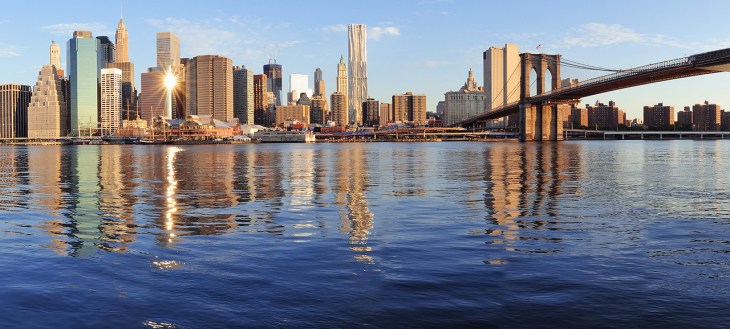On a crisp, sunny Sunday morning here in Brooklyn it’s hard to imagine that devastation is just around the corner. Whole communities are burnt and swept to sea. Endless gas lines and power outages abound. The arteries and capillaries that carried the lifeblood of this city – its myriad people and their trains – are choked off. It’s getting better, but it’s not there yet.
We live in a time and place mediated by electronics. Our friends tweeted and messaged us that they were okay. They didn’t call. They didn’t stay silent, shivering in the dark. They clung to the flickering flame of a smartphone screen as winds raged outside. Some had parties, laughing at the rain. Some prepared by firing up generators and filling bathtubs. Some barely slept.
Some lost their loved ones. We can’t forget that.
But as New York digs out of its sludge and sand and slop, as the streetlights pop on all down Broadway and life returns to communities hardest hit, as hammer hits nail, as neighbor helps neighbor, as we hug each other and look out on desolation or a quiet street or both, we now realize we live in a strange new world.
I’ve lived through a few New York moments. 9/11 was the first one. The blackouts a year later came next. A tornado hit our neighborhood, tearing down facades and uprooting trees. But this was something different. We saw the horror as it happened. We saw messages, photos, and updates. We had a flood of information. If you watched these only and ignored television, you’d see a picture of a city in cold panic, waiting for the worst. The worst came. And now we see the follow-up messages. The lens points at the horror: “This was my basement. This was my car. This was my son and his friend. This was my home. This was my moment.”
This is your moment. Let’s do something.
Let’s build the tools necessary to prevent this from happening again. Let’s create tools to call neighbors together. Let’s build the walls we’ll need to stave off future floods. Let’s build the cars and energy sources we will need to keep the seemingly indifferent earth from paying closer attention to our misdeeds. Let’s figure out ways of communicating when the lights are out and there’s no one to call when we’ve fallen in the dark, when we’re hungry in the gloom, when we need someone to take us out of where we are.
We’ve made tools to sap our attention. We’ve made entertainments for a connected age. But what about the tools of protection? What is our candle to curse the dark, the bucket brigade to save our town?
New York is self-healing. It routes around damage and then invisible forces come in to clean up. Walk down the streets of Coney Island in a week and a march of sneakers will have carried off the sand. The holes in the boardwalk will be a nuisance rather than a tragedy. Climb down into our hidey-holes and see the trains roaring through, one by one by one.
“The city is like poetry,” wrote E.B. White. “It compresses all life, all races and breeds, into a small island and adds music and the accompaniment of internal engines.” Those engines are us, our time is now, we are that teeming life. Prepare us for the future, futurists, by building something that will last. White once wrote of “the destroying planes” that took a bead on Manhattan once not long ago. Now we have a faceless force – call it progress, call it energy dependency, call it avarice, call it the best solution to a bad problem – that threatens our every shore, that flattens our plains cities and scorches our South. Let’s solve these problems before even the planes of war fall from the sky.
Those here strive to be here. Let’s show the world what comes after tragedy. Let’s show the world the future. Let’s show the world New York.
